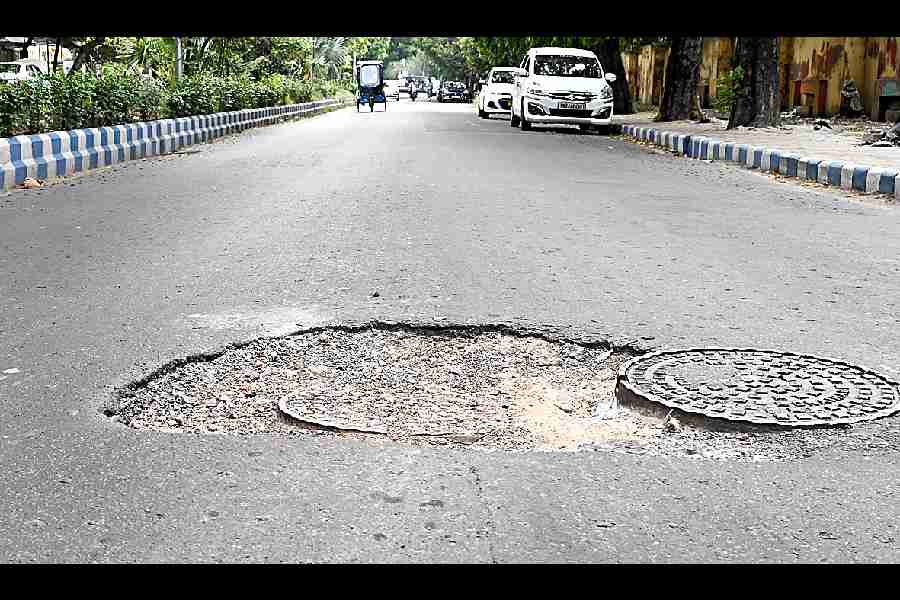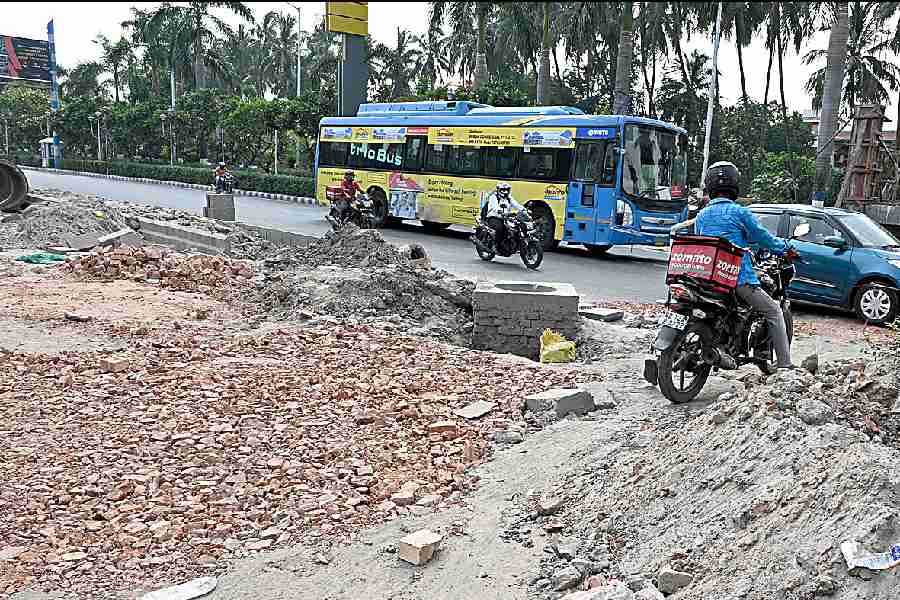A road where driving once used to be a pleasure is now dug up at multiple places because pipes are being laid underneath. The entire stretch is devoid of any signs to warn motorists.
The Salt Lake Bypass is a 5.1km-long arterial road that connects New Town and Sector V with EM Bypass at the Chingrighata intersection.
A 300m stretch of the Salt Lake Bypass has been dug up near the CRPF camp in Sector V, close to the Sector V Metro station, where construction workers are laying concrete pipes as part of a stormwater drainage project.
Motorists headed towards New Town from the Chingrighata crossing on EM Bypass are taken by surprise as the dug-up stretch appears without any warning just after the Sector V Metro station, where the road turns right.
The dug-up area is right on the approach of the turning. The pipes are being laid in such a way that both the New Town and the EM Bypass-bound flanks of the Salt Lake Bypass have been dug up.

The surface around a manhole in the middle of a road, which connects HB Block in Salt Lake to the Salt Lake Bypass, has subsided, exposing the iron lids
The approach to this stretch is relatively smooth and wide where vehicles tend to pick up speed but are forced to slam brakes when drivers spot the obstacles.
The road surface near this construction site has sand and soil strewn over them making it risky for motorists to drive through. As for pedestrians, stone chips on the road get shot off like missiles every now and then by the wheels of passing vehicles.
An official of the Nabadiganta Industrial Township Authority (NDITA) said that the stretch has been dug up to place concrete pipes as part of a stormwater drainage project.
According to the official, the pipes are part of a drainage network that is expected to ease Sector V’s waterlogging problems during the monsoon.
“We have already built a new stormwater drainage pumping station near the Sector V Metro station. These pipes will be connected to the pumping station and will drain out stormwater into the Eastern Drainage Channel,” the official said.
The new stormwater pumping station near Sector V is equipped with a pump that can discharge water at 2,000 cubic metres per hour. It also has two smaller pumps that have a capacity of discharging water at 1,000 cubic metres per hour.
When asked why there was no warning signage, red flags or flashing lights to warn motorists about the construction site, the official said that they had instructed the agency involved to do it.
“We will look into this and install warning signage on the road, including warning lights that can be spotted from a distance during the night,” the official added.
In Salt Lake, roads leading to Sector V, including the connector that leads from the HB Block and the Calcutta Heart Clinic to a bridge over the Eastern drainage Channel and then on to the Salt Lake Bypass, are marred with potholes.
This road is not only peppered with potholes, but at several places, the road surface around manholes has subsided. The metal lids jut out dangerously in the middle of the road.
At night the stretch becomes extremely hazardous for anybody to drive or ride through as the area plunges into darkness. Thestreet lights here do not function.
